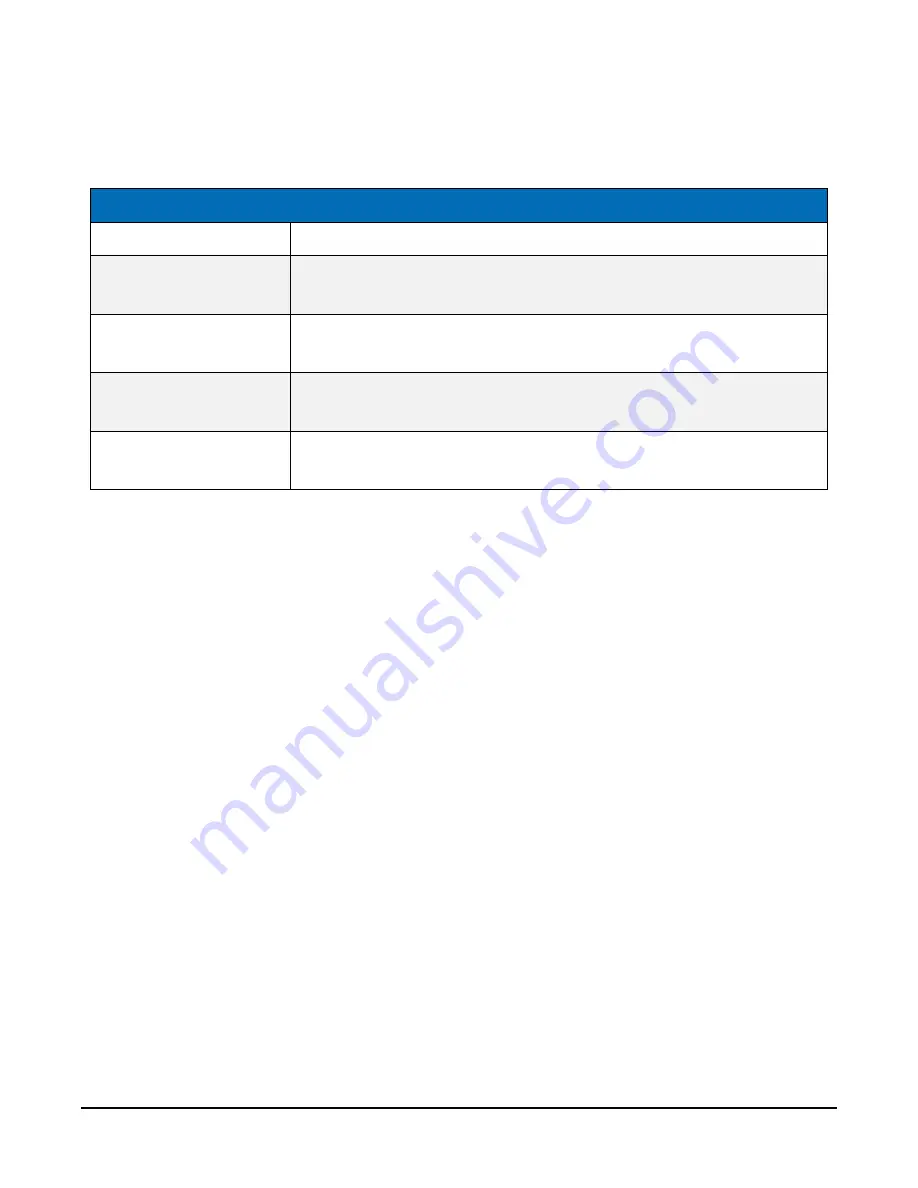
When the
aM!
is issued, the data logger pauses its operation and waits until either it receives the
data from the sensor or the time,
ttt
, expires. Depending on the scan interval of the data logger
program and the response time of the sensor, this may cause skipped scans to occur. In this case
make sure your scan interval is longer than the longest measurement time (
ttt
).
Table B-2: Example aM! sequence
0M!
The data logger makes a request to sensor 0 to start a measurement.
00352<CR><LF>
Sensor 0 immediately indicates that it will return two values within the
next 35 seconds.
0<CR><LF>
Within 35 seconds, sensor 0 indicates that it has completed the
measurement by sending a service request to the data logger.
0D0!
The data logger immediately issues the first
D
command to collect
data from the sensor.
0+.859+3.54<CR><LF>
The sensor immediately responds with the sensor address and the
two values.
B.1.7 Stopping a measurement command
A measurement command (
M!
) is stopped if it detects a break signal before the measurement is
complete. A break signal is sent by the data logger before most commands.
A concurrent measurement command (
C!
) is aborted when another valid command is sent to
the sensor before the measurement time has elapsed.
B.1.8 Send data command (aD0! … aD9!)
The Send Data command requests data from the sensor. It is issued automatically with every type
of measurement command (
aM!
,
aMC!
,
aC!
,
aCC!
). When the measurement command is a
M!
or a
MC!
, the data logger issues the
aD0!
command once a service request has been received
from the sensor or the reported time has expired. When the data logger is issuing concurrent
commands (
aC!
or
aCC!
), the Send Data command is issued after the required time has elapsed
(no service request will be sent by the sensor). In transparent mode (see
(p. 22) ), the user asserts this command to obtain data.
Depending on the type of data returned and the number of values a sensor returns, the data
logger may need to issue
aD0!
up to
aD9!
to retrieve all data. A sensor may return up to 35
characters of data in response to a
D
command that follows an
M!
or
MC!
command. A sensor
may return up to 75 characters of data in response to a
D
command that follows a
C!
or
CC!
command. Data values are separated by plus or minus signs.
Command:
aD0!
(
aD1!
…
aD9!
)
CS225 Temperature String
21






































